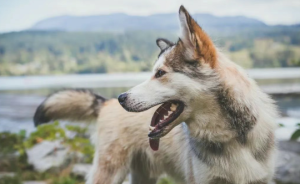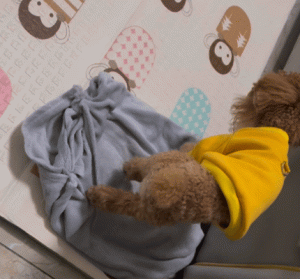A dog’s tail isn’t just a decorative feature—it’s also a powerful indicator of their emotions. Spinning around chasing their own tail is a common behavior in dogs. Many people see this and assume the dog is just being silly, but the reason can be more complex than that. So why do dogs do this? Dog owners need to pay close attention, because your pup might actually be trying to tell you something important!
-
Boredom
Just like humans, dogs can get bored. If a dog likes to chase its own tail and then lets go after catching it, it usually means it’s simply bored and has nothing to do at home. Chasing their tail provides excitement and stimulation while helping them burn off excess energy. This behavior generally doesn’t last long, so owners don’t need to worry too much.
-
Skin Issues
Dogs that play outside frequently may pick up parasites or develop skin conditions. This can cause itching and discomfort, prompting them to spin around, lick, or bite their tail to relieve irritation. Owners should part their dog’s fur to check for black specks, which could indicate parasites. In that case, timely deworming or consulting a veterinarian for proper treatment is necessary.
-
Anal Gland Blockage
Under a dog’s tail are special glands called anal glands, located around the rear area. These glands are prone to infection, inflammation, or blockage. If an owner neglects regular cleaning, the glands may become blocked, painful, or itchy, leading the dog to spin and lick or bite its tail. Regular anal gland care is essential to keep the area clean and prevent infection.

-
Seeking Attention
Dogs craving attention may also chase or bite their tails. If owners react positively—laughing or praising the behavior—the dog may think you enjoy it. This is their way of signaling that they want to play with you. If possible, spend some time playing with your dog or offer small treats to comfort them.
-
Psychological Issues
Sometimes, tail-chasing can stem from psychological factors. Dogs may bite their tails when feeling anxious or stressed, as it helps relieve tension. However, it can also exacerbate anxiety if excessive. Owners should ensure regular walks and meaningful interactions to keep their dogs mentally healthy.
-
Tail Injuries
If a dog’s tail is injured, it may bite or chew it to relieve pain. In case of tail injuries, owners should promptly dress the wound. If the dog resists due to pain, offering small treats can help calm it down and allow proper care.
-
Imitation
Many dog behaviors are learned from their parents. Some dogs bite their tails, and puppies observing this may imitate the behavior by biting their own tails.
If this is the case—meaning the dog is just biting its tail for fun—owners don’t need to worry too much or try to discipline it. Simply let the dog play on its own.





